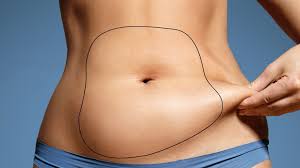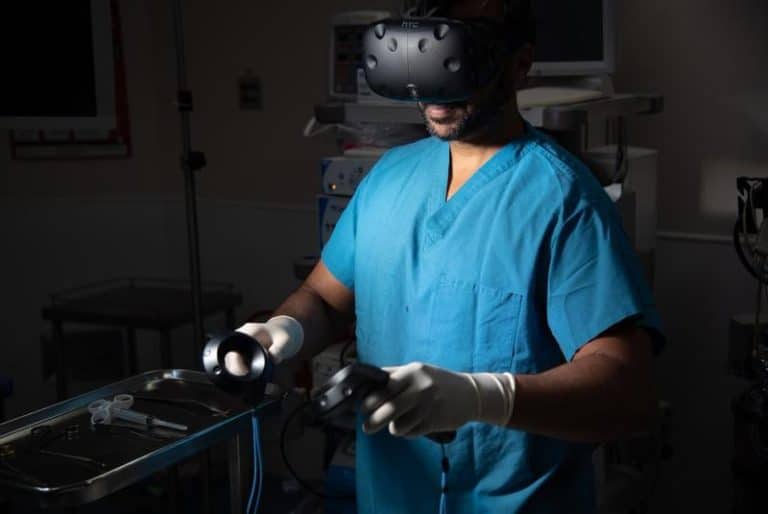Struggling with a stubborn belly pooch? Liposuction for belly pooch and abdominal fat can be the solution you’ve been searching for to achieve a flat stomach by removing stomach fat. This popular abdominal liposuction surgery targets unwanted fat, giving you a flatter, more contoured abdomen with impressive abdominal liposuction results through various liposuction techniques, often referred to as belly lipo. Many people find that diet and exercise alone just don’t cut it when dealing with resistant fat, and that’s where liposuction steps in for effective fat removal results, especially for subcutaneous belly fat.
Imagine feeling confident in your own skin again. It’s not just about looks; it’s about boosting your self-esteem with abdominal liposuction surgery and enhancing your quality of life through stomach liposuction and improved abdominal liposuction results. With experienced professionals guiding you through the stomach liposuction process, you’ll gain insights into what to expect and how to prepare for the liposuction results. Get ready to take the first step toward a new you with stomach liposuction!
Key Takeaways
- Liposuction can effectively target belly pooch by removing stubborn fat, but understanding the types of belly fat is crucial for optimal results.
- Ideal candidates for liposuction are those close to their ideal weight and have realistic expectations about the surgery and its outcomes.
- Discuss anesthesia options with your surgeon for stomach liposuction to ensure comfort during the procedure, as different methods may suit different needs.
- Be prepared to manage loose skin post-liposuction; options like skin tightening treatments may be necessary for the best aesthetic results.
- Post-surgery, such as after stomach liposuction, weight gain is possible if healthy lifestyle choices are not maintained, so commitment to diet and exercise is essential.
- Combining liposuction with other procedures can enhance results, but consult with a professional to determine the best approach for your goals.
Understanding Belly Fat and Liposuction
Subcutaneous vs. Visceral Fat
Subcutaneous fat lies just under the skin. This type of fat can be pinched with fingers. It is often found in areas like the belly, thighs, and arms, particularly with stomach liposuction. In contrast, visceral fat surrounds internal organs. It is deeper in the body, like stomach lipo, and cannot be seen or pinched. This fat, often associated with stomach lipo, is linked to serious health issues like diabetes and heart disease.
Liposuction Targets Subcutaneous Fat
Liposuction focuses on removing subcutaneous fat. Procedures like belly liposuction or abdominal liposuction surgery aim to reshape the body. They do not affect visceral fat. Therefore, patients should understand that effective liposuction does not solve all fat-related problems.
Importance of Diet and Exercise
Diet and exercise play a crucial role in managing visceral fat, unlike stomach lipo. A balanced diet helps reduce overall body fat. Regular exercise increases metabolism and burns calories. These methods are essential for long-term health benefits. Relying solely on lipo and fat removal surgery will not yield lasting results without lifestyle changes.
Common Misconceptions
Many believe that liposuction is a quick fix for weight loss. This misconception can lead to disappointment. Liposuction is not a substitute for healthy habits. It reshapes the body with lipo but does not prevent future weight gain. Patients must maintain their results through diet and exercise.
Abdominal Liposuction Results
Results from abdominal liposuction treatments vary among individuals. Factors such as age, skin elasticity, lipo, and overall health impact outcomes. Some may see significant changes from lipo, while others may require additional procedures for desired results.
Alternative Fat Removal Approaches
Several alternatives exist for those considering fat removal. Options include tummy tuck procedures or smartlipo techniques. Each method has its own benefits and risks. Consulting with a qualified surgeon helps determine the best lipo approach based on individual needs.
Types of Fat in the Belly Area
Subcutaneous Fat
Subcutaneous fat, often referred to as lipo, is the pinchable fat located just beneath the skin. This type of belly fat is what people often feel when they grab their stomach, lipo. It can be found all over the body, but lipo tends to accumulate around the abdomen.
This fat serves a purpose. It helps protect muscles and bones from injury. However, excess subcutaneous fat can lead to health issues. It may increase the risk of lipo conditions like diabetes and heart disease. Many people seek liposuction to remove this unwanted belly fat. The procedure targets these fat deposits effectively.
Visceral Fat
Visceral fat is different from subcutaneous fat. This type of lipo fat is stored deep within the abdominal cavity. It surrounds vital organs like the liver and intestines. Visceral fat, also known as lipo, is often referred to as “active” fat because it releases fatty acids and hormones into the bloodstream.
High levels of visceral fat, often treated with lipo, can lead to serious health problems. These include increased risks of heart disease, diabetes, and metabolic syndrome. Unlike subcutaneous fat, visceral fat cannot be removed through liposuction. Liposuction focuses on removing excess belly fat that is pinchable and visible.
Stubborn Belly Fat
Many individuals struggle with stubborn belly fat. This type of unwanted body fats includes both subcutaneous and visceral fat. People often find it difficult to lose these fatty areas despite diet and exercise efforts. Stress, genetics, and hormonal changes can contribute to stubborn belly fat.
Liposuction offers a solution for those looking to achieve a flatter stomach by targeting excess belly fat in specific areas. However, it’s essential to understand that liposuction does not replace healthy lifestyle choices.
Importance of Understanding Fat Types
Understanding the different types of belly fat is crucial for effective weight management. Recognizing that subcutaneous fat can be targeted with procedures like liposuction helps set realistic expectations.
On the other hand, knowing about visceral fat emphasizes the need for lifestyle changes. Reducing visceral fat requires a combination of diet, exercise, and sometimes medical intervention.
Who is an Ideal Candidate for Liposuction
Stubborn Fat
Individuals with stubborn subcutaneous fat are often the best candidates for liposuction. This type of fat sits just beneath the skin and can be hard to lose, even with diet and exercise. Many people struggle with this fat, especially around the belly area.
Candidates should have specific areas of fat they want to target. Liposuction does not work as a weight-loss method. Instead, it sculpts the body by removing unwanted fat from certain spots. Those who have tried other methods without success may find liposuction to be a solution.
Skin Elasticity
Good skin elasticity is crucial for achieving the best results. Elastic skin will bounce back after the fat is removed. If skin lacks elasticity, it may appear loose or saggy post-surgery. Candidates should assess their skin condition before considering the procedure.
Age can play a role in skin elasticity. Younger individuals often have tighter skin compared to older adults. However, genetics also affects skin quality. Candidates should consult with a medical professional to evaluate their skin’s condition.
Weight Considerations
Ideal candidates are typically close to their ideal weight. Being at a healthy weight ensures that liposuction targets specific areas effectively. It helps maintain body proportions after the procedure. Those who are significantly overweight may not be suitable candidates.
Maintaining a healthy lifestyle is essential before and after surgery. Regular exercise and balanced nutrition contribute to better outcomes. Candidates should not view liposuction as a substitute for healthy habits.
Health Factors
Candidates should also consider their overall health. Certain medical conditions may disqualify someone from having liposuction. Conditions like heart disease or diabetes can complicate recovery. A thorough medical evaluation is necessary before proceeding.
Individuals who smoke may face risks during surgery and healing. Smoking affects blood flow and can hinder recovery times.
Emotional Readiness
Mental readiness matters too. Candidates should have realistic expectations about the results. Liposuction can enhance appearance but won’t change one’s life drastically. Emotional stability plays a role in recovery and satisfaction with results.
Consulting with a qualified surgeon is vital for understanding what to expect. They can provide insights into whether someone is an ideal candidate based on individual circumstances.
Anesthesia Options for Stomach Liposuction
Local Anesthesia
Local anesthesia is often used for stomach liposuction. This method numbs only the area being treated. Patients remain awake during the procedure. It reduces risks associated with general anesthesia. Many prefer this option as it allows for a quicker recovery.
Local anesthesia can be combined with sedation. This provides comfort without full unconsciousness. Patients can communicate with the surgeon if needed. This approach helps in ensuring safety and precision.
Tumescent Method
The tumescent method is a popular technique in liposuction. This method involves injecting a solution into the fatty tissue. The solution contains lidocaine and epinephrine. Lidocaine acts as a local anesthetic, while epinephrine constricts blood vessels.
This combination minimizes bleeding and bruising during surgery. It also enhances patient comfort significantly. The tumescent method allows for larger volumes of fat to be removed safely. Surgeons find it effective for targeting stubborn areas like the belly pooch.
Many patients experience less pain after the procedure with this method. They often report quicker recovery times as well. Overall, it has become a standard practice in liposuction procedures.
Role of Lidocaine
Lidocaine plays a critical role in stomach liposuction. It allows procedures to be performed without general anesthesia. This is beneficial for many patients who fear the side effects of being put under.
Lidocaine numbs the area effectively, providing pain relief during surgery. Its use means that patients can avoid some risks tied to general anesthesia, such as respiratory issues or prolonged recovery time.
Surgeons appreciate lidocaine for its rapid onset and effectiveness. This local anesthetic ensures that patients remain comfortable throughout the procedure. By using lidocaine, surgeons can focus on achieving optimal results without compromising patient safety.
Managing Loose Skin After Liposuction
Skin Laxity
Loose skin often follows liposuction. This is especially true for older adults. As people age, skin elasticity decreases. When fat is removed, the skin may not shrink back completely. This can lead to a sagging appearance. Maintaining skin tightness becomes a concern after any fat removal treatment.
SmartLipo
SmartLipo is a laser-assisted liposuction option. It helps with skin tightening during the fat removal process. The laser energy heats the tissue beneath the skin. This stimulates collagen production, improving skin laxity. Many patients report better fat removal results with this technique. SmartLipo can be an effective choice for those worried about loose skin.
Additional Procedures
e individuals may need more than liposuction to address loose skin. A tummy tuck is one such option. This surgical procedure removes excess skin and tightens the abdominal area. It provides a more toned look for those with significant skin laxity. Patients should discuss these options with their surgeon.
Potential for Weight Gain Post-Liposuction
Weight Loss Misconception
Many people believe that liposuction is a weight loss solution. This is a common misconception. Liposuction targets specific areas of fat, like the belly pooch. It helps reshape the body by removing fat cells. However, it does not significantly change overall body weight. Patients often lose only a few pounds after the procedure.
Fat Cell Removal
Liposuction permanently removes fat cells from the abdomen. This means those specific cells cannot return. Once removed, they do not regenerate. The body has a set number of fat cells. If some are taken out, the remaining cells can expand or shrink based on weight changes.
Risk of Weight Gain
Weight gain after liposuction can happen if patients do not maintain their lifestyle. If someone gains weight, the remaining fat cells may store more fat in other areas. For example, weight might shift to the thighs or arms instead of the abdomen. This can lead to an uneven appearance.
Managing Expectations
Patients must have realistic expectations about liposuction results. This procedure is not a substitute for healthy habits. Diet and exercise remain crucial for maintaining results. Without these, individuals may find themselves frustrated with their bodies later on.
Long-Term Effects
Studies show that many people who undergo liposuction see changes in their body shape over time. Some report satisfaction with their new look, while others struggle with maintaining it. Emotional factors also play a role in how people perceive their bodies after surgery.

Maintaining Results
To keep the benefits of liposuction, focus on a balanced diet and regular exercise. Here are some tips:
- Eat nutritious foods: Include plenty of fruits and vegetables.
- Stay active: Aim for at least 150 minutes of moderate exercise each week.
- Stay hydrated: Drink plenty of water daily.
- Monitor weight: Regularly check your weight to catch any changes early.
These steps help prevent unwanted weight gain and promote overall health.
Expected Results and Recovery Timeline
Immediate Results
Patients experience an immediate reduction in subcutaneous fat after the liposuction procedure. This occurs as the surgeon removes targeted fat deposits from the belly area. The amount of fat removed can vary by case. Some patients might notice a flatter stomach right away. However, this is just the initial outcome.
Recovery Timeline
Recovery from liposuction typically follows a general timeline. Swelling and bruising are common in the first few days. Patients may feel discomfort as they heal. Most swelling peaks around 48 hours post-procedure. After that, it gradually decreases over several weeks.
By the end of the first week, many patients can return to light activities. Strenuous exercise should wait until about four to six weeks post-surgery. Full recovery usually takes several months. During this time, the body continues to adjust and reshape.
Realistic Expectations
Final results become visible after a few months. Patients should not expect immediate perfection. It often takes time for swelling to fully subside and for skin to tighten around the new contours.
Most cases show significant improvement within three to six months. Factors like age and overall health can affect how quickly results appear.
Visual Documentation
Patients often take before-and-after photos to document their progress. These photos can help visualize changes over time. Some choose to share their journey through videos on social media platforms. This creates a sense of community among individuals undergoing similar experiences.
Factors Influencing Outcomes
Several factors influence the final results of liposuction:
- Amount of Fat Removed: More fat removal can lead to more dramatic changes.
- Patient’s Age: Younger patients generally have better skin elasticity.
- Area Treated: Different areas of the body respond differently to liposuction.
Being aware of these factors helps set realistic expectations for outcomes.
Emotional Considerations
Patients often feel excited yet anxious about their results. Understanding that healing takes time is crucial for emotional well-being during recovery. Support from friends or family can be beneficial.
Maintaining Results with Lifestyle Choices
Balanced Diet
A balanced diet plays a crucial role in maintaining liposuction results. After the procedure, people often feel motivated to eat healthier. This motivation can help prevent new fat accumulation. A focus on whole foods, like fruits and vegetables, supports overall health. Lean proteins and healthy fats are also important. These nutrients help maintain muscle mass and promote skin elasticity.
Avoiding processed foods is essential. These foods often contain added sugars and unhealthy fats. They can lead to weight gain and negate the benefits of liposuction. Portion control is another key aspect. Eating smaller meals throughout the day helps regulate metabolism. This approach keeps energy levels stable and prevents overeating.
Regular Exercise
Regular exercise is vital for long-term success after liposuction. Many people find that incorporating weight training into their routine yields significant benefits. Weight training builds muscle, which can increase metabolic rate. This means the body burns more calories even at rest.
Cardio exercises, like running or cycling, also help manage weight effectively. Engaging in physical activity at least three to five times a week is recommended. It not only helps prevent fat accumulation but also boosts mood and energy levels.
A consistent gym routine can enhance muscle tone in the abdominal area. This leads to more defined abs over time. Combining strength training with cardio provides a well-rounded fitness plan.
Hydration and Skincare
Staying hydrated supports overall health and skin elasticity after liposuction. Water helps flush out toxins from the body. It also keeps skin looking fresh and youthful. Aim for at least eight glasses of water daily to maintain hydration levels.
Incorporating a good skincare routine is equally important. Applying moisturizers regularly helps improve skin texture and appearance. This is especially true for areas affected by liposuction. Keeping skin healthy aids in recovery and enhances results.
Using sunscreen protects the skin from damage caused by UV rays. This protection is crucial for maintaining skin health over time. People should be mindful of how external factors affect their skin post-surgery.
Common Risks
While liposuction offers many benefits, there are risks involved as well. Some individuals may experience complications during recovery. These can include infection, scarring, or changes in skin sensation. Understanding these risks can help people make informed decisions about their health.
Investing in lifestyle changes post-liposuction is essential for lasting results. Relying solely on the procedure as a quick fix will not solve underlying issues related to weight management.
Combining Liposuction with Other Procedures
Tummy Tuck
Surgeons often recommend combining liposuction procedures with a tummy tuck. This combination targets both fat removal and skin tightening. A tummy tuck removes excess skin, which enhances the results of liposuction. Many patients find that this duo provides optimal body contouring.
The lipo procedure focuses on fat reduction. It can sculpt the belly pooch effectively. However, it may not address loose skin. A tummy tuck complements this by tightening the abdominal area. Patients can achieve a flatter stomach and improved shape through this approach.
Muscle-Toning Exercises
Incorporating muscle-toning exercises after liposuction can enhance results. Surgeons suggest that physical activity helps maintain a toned appearance. Engaging in strength training builds muscle and boosts metabolism. This can prevent weight gain after the lipo procedure.
Post-surgery, individuals should focus on core workouts. These exercises strengthen abdominal muscles. They improve overall body tone and support the results of liposuction. Combining exercise with healthy eating habits is crucial for long-term success.
Non-Invasive Treatments
Non-invasive treatments like CoolSculpting can also complement liposuction. This method freezes fat cells without surgery. It targets stubborn areas that liposuction may not fully address. Many patients appreciate this option for additional fat reduction.
CoolSculpting works well for those who want to avoid surgical risks. It requires no downtime, allowing individuals to resume daily activities quickly. The treatment uses cold temperatures to destroy fat cells gradually. Over time, patients notice a slimmer appearance in treated areas.
Combining these options can lead to better overall outcomes. Each method has its unique benefits. Patients should discuss their goals with surgeons to create a personalized plan.
Summary of Benefits
- Tummy Tuck: Removes excess skin and tightens the abdomen.
- Muscle-Toning Exercises: Enhances tone and supports maintenance.
- CoolSculpting: Non-invasive option for additional fat reduction.
Final Remarks
Liposuction can be a game changer for tackling that stubborn belly pooch. Understanding the types of belly fat and knowing if you’re an ideal candidate sets the stage for successful results. With the right anesthesia options and post-op care, you can manage recovery and skin concerns effectively. Remember, maintaining your results is all about lifestyle choices.
If you’re ready to take the next step toward a flatter belly, consult with a qualified professional. They can guide you through the process and help you achieve your aesthetic goals. Don’t wait—your journey to confidence starts now!
Frequently Asked Questions
What is liposuction for belly pooch?
Liposuction for belly pooch is a cosmetic procedure that removes excess fat from the abdominal area. It helps contour the stomach, providing a flatter appearance and enhancing body confidence.
Who can benefit from liposuction?
Ideal candidates include individuals with stubborn belly fat who are close to their target weight. They should be in good health and have realistic expectations about the results.
How is anesthesia used during stomach liposuction?
Anesthesia options vary, including local anesthesia with sedation or general anesthesia. The choice depends on the extent of the procedure and patient preference.
What happens to loose skin after liposuction?
e patients may experience loose skin post-liposuction. This can improve over time, but additional procedures like tummy tucks may be necessary for significant tightening.
Can I gain weight after liposuction?
Yes, weight gain is possible after liposuction. Maintaining a healthy lifestyle with balanced diet and exercise is crucial to preserving results.
What is the recovery timeline for liposuction?
Recovery typically takes one to two weeks, with most patients returning to normal activities within 10 days. Full results appear in several months as swelling subsides.
How can I maintain my results after liposuction?
To maintain results, adopt healthy eating habits and regular exercise. Staying active and managing your weight are key to long-term success post-procedure.





